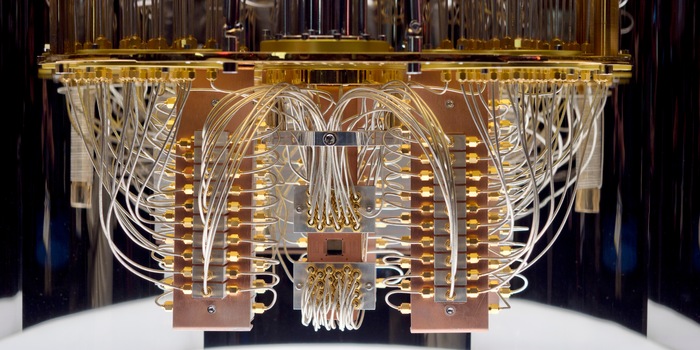
Building a bridge between quantum chips
British researchers have found a way to move qubits between two neighbouring quantum chips. This could pave the way for powerful quantum computers.
A key challenge on the way to a powerful quantum computer is to connect millions of quantum bits, or qubits for short, in such a way that they interact reliably with each other. So far, quantum computers are still working on a fairly rudimentary 100-qubit scale. Scientists at the University of Sussex in the United Kingdom have now succeeded in connecting two microchips via a special quantum matter link and transferring qubits between neighbouring modules. This is reported by the group led by quantum physicist Mariam Akhtar in the scientific journal "Nature Communications". Both the speed and the accuracy are better than anything previously achieved with ion trap technology. This shows that quantum computers can be scaled beyond the physical limits of a microchip.
Among all the different ways in which qubits can be realised for future quantum computers, the ion trap is one of the most promising concepts. Ions, i.e. electrically charged atoms or molecules, are held in place using electric and magnetic fields and manipulated with lasers. The quantum state remains stable over a comparatively long period of time, the computing precision is higher than with other qubit systems and the microchip requires slightly less cooling than the superconducting circuits that IBM and Google use for their quantum chips, for example.
In their experiment, the researchers developed a special technique to transport the ions. Using electric fields, they controlled the ion movement in such a way that a single ion qubit could be physically moved back and forth between the modules. "Using this method, we were able to achieve a success rate of 99.999993 per cent and a connection rate of 2424 connections per second over a total distance of 684 micrometres," they write in the paper. The fragile quantum state remained stable over the entire transport period. This opens up the potential to put together hundreds or even thousands of quantum microchips like puzzle pieces and connect them with each other.
Quantum chips are still quite simple and small, said Winfried Hensinger, professor of quantum technologies at the University of Sussex, according to a statement from the university. "But as the number of qubits increases, a modular approach is the key to making quantum computers powerful enough to one day solve real industrial problems." Hensinger is co-founder of a start-up that aims to bring this technology to market. "Universal Quantum" was recently awarded a contract by the German Aerospace Centre (DLR).r Aerospace Centre (DLR) for 67 million euros for the construction of two quantum computers in which the ion trap qubits will be used.
Spectrum of science
We are a partner of Spektrum der Wissenschaft and want to make sound information more accessible to you. Follow Spektrum der Wissenschaft if you like the articles.
[[small:]]
Cover image: Shutterstock, Boykov / Quantum computers could one day help in materials research, in the development of new drugs or in solving complex problems in the banking and insurance sector, for example.
Experts from science and research report on the latest findings in their fields – competent, authentic and comprehensible.